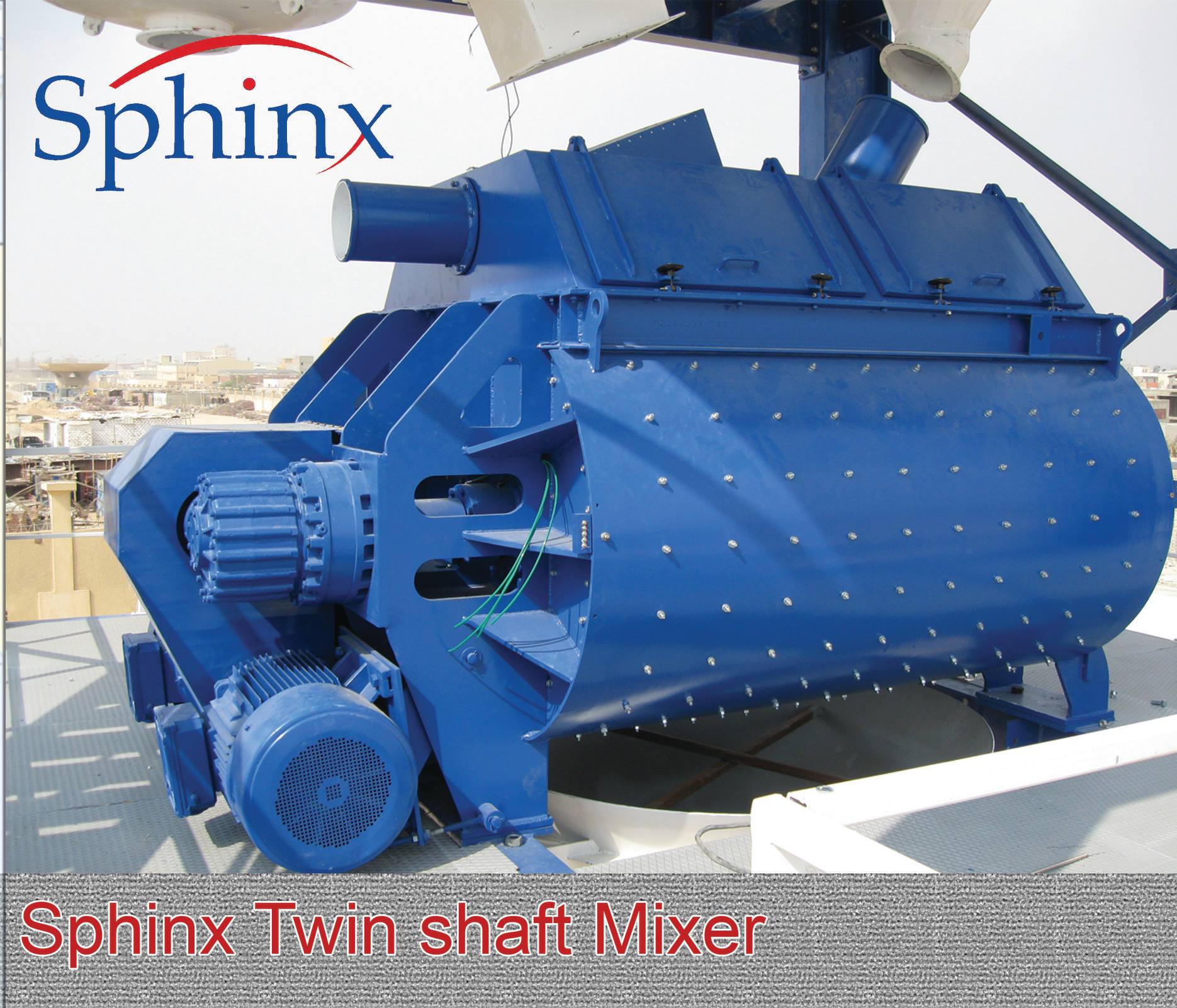Sphinx for Engineering Works founded in Egyptian market since 2007 with its own factories over14000 square area specialized in manufacturing of Batching Plants
Twin Shaft Mixer
Twin shaft mixers are robust and efficient mixing devices widely used in various industrial applications, especially in the production of concrete. Here are some key details about twin shaft mixers:
-
Design and Operation: Twin shaft mixers feature two parallel horizontal shafts, each fitted with several paddles or blades. These shafts rotate in opposite directions, which helps to produce a vigorous and homogeneous mixing action. The design is particularly effective for mixing viscous materials quickly.
-
Applications: While they are predominantly used for mixing different grades of concrete, twin shaft mixers are also employed in the production of other materials like powders, granules, and pastes in industries such as chemicals, minerals, and metallurgy.
-
Capacity and Size: These mixers are available in a range of sizes, from small, portable models to large stationary units. The capacity of twin shaft mixers can vary significantly, with industrial-scale models capable of handling several cubic meters of materials in one batch.
-
Efficiency: Twin shaft mixers are known for their efficiency in mixing. They reduce mixing time significantly compared to other types of mixers, like drum mixers, especially when dealing with heavy and dense materials.
-
Construction Material: They are typically constructed from high-strength steel to withstand the wear and tear of mixing heavy materials. Some parts, like paddles or blades, might be made from specialized alloys or coated with specific materials to enhance durability and reduce maintenance needs.
-
Advantages: The main advantages of twin shaft mixers include their ability to produce a more consistent mix, their suitability for a wide range of materials, and their relatively fast mixing time. They are also known for their capability to handle large aggregate sizes which is crucial in high-strength concrete applications.


